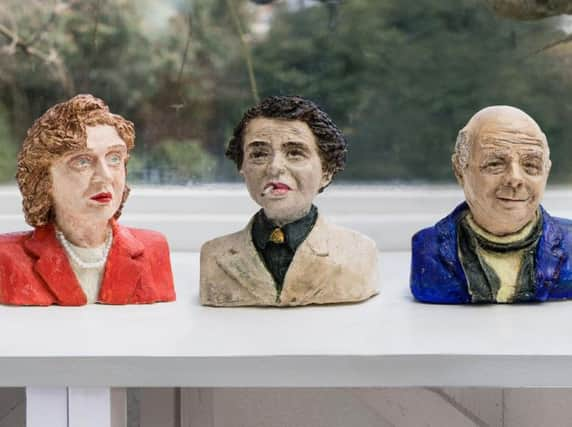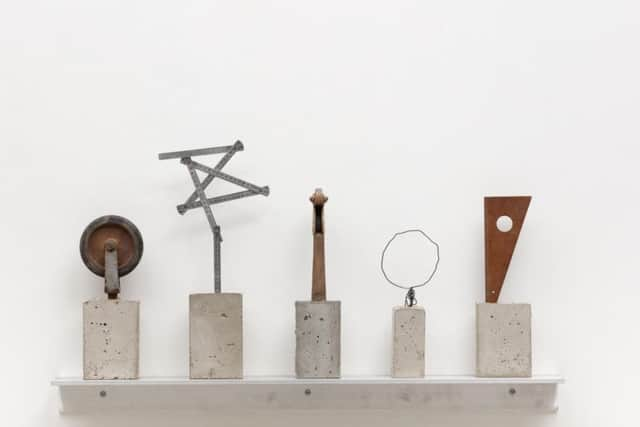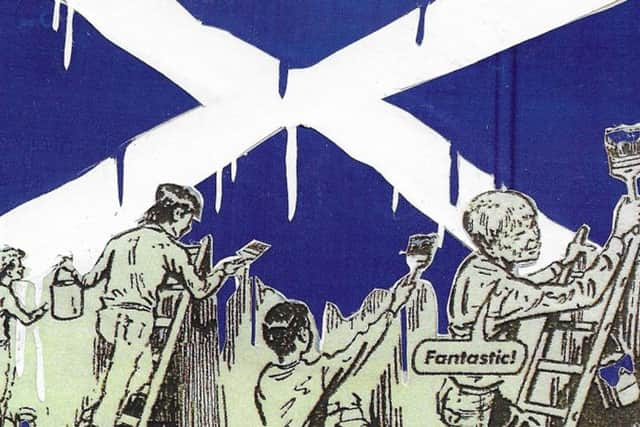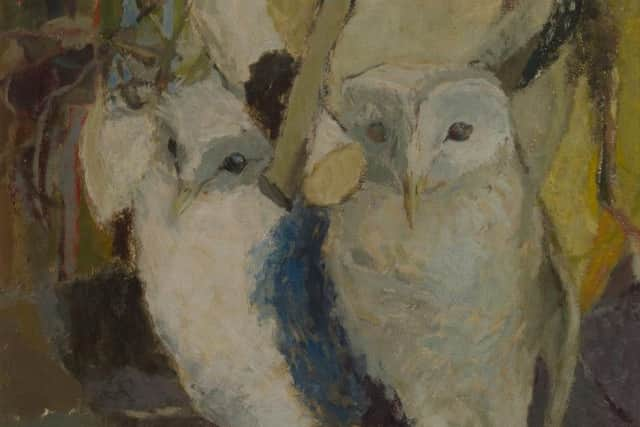Visual Art reviews: David Mach: The Paper to Prove It | John Busby: Silent Landscape | David Batchelor: My Own Private Bauhaus | Nicole Farhi: Writing Heads


David Mach: The Paper to Prove It, Royal Scottish Academy * * * *
John Busby: Silent Landscape, Open Eye Gallery * * * *
David Batchelor: My Own Private Bauhaus, Ingleby Gallery * * * * *


Nicole Farhi: Writing Heads, Fine Art Society * * * *
Advertisement
Hide AdIt is more than 30 years since David Mach first made his mark on Festival Edinburgh by building a Greek temple in Prince’s Street Gardens out of six thousand used car tyres. Since then he has reinvented himself quite a few times, but he has always favoured found or recycled objects like newspapers, or things put to uses other than those for which they were designed, sculptures made of coat hangers, or live matches, for instance, the latter with the added fun of a small explosion when the matches were lit. Collage is a variation on this theme and recently it has been his favoured medium. His current show at the RSA, The Paper to Prove It, includes a couple of his large coloured collages, an hour glass, for instance, with a happy beach scene above and all the rubbish left behind beneath. There are also several smaller coloured collages, but the bulk of the show consists of small, neatly made collages in black and white with touches of newsprint colour cut from comic books and recomposed with a wicked sense of humour and more than a touch of anarchy. Some of these have also been turned into screen prints.
Taking a hint from Roy Lichtenstein speech bubbles with exclamations, Aaaargh!, Ooof!, Ugh! Owwww! and suchlike offer an inarticulate commentary on various catastrophic events portrayed. Indeed on occasion these exclamations, each in its appropriate bubble often with jagged edges, are the whole composition. It is as though in a world where the Forth Bridge is overwhelmed in a storm, or Edinburgh Castle is swamped in tropical vegetation, no more coherent response is possible.


The work of the late John Busby at the Open Eye makes quite a contrast. Latterly Busby, who was a wonderful draughtsman, was best known as a painter of birds and was much admired by the ornithologists. There are very few birds in this show, however, just a couple of prints and a rather lovely painting of dancing cranes. Instead it consists mostly of austere, nearly abstract landscapes. Busby studied at Edinburgh College of Art in the fifties when Gillies was head of painting and an early picture here, Coniston from above Kilnsey, a spare landscape articulated by the lines of stone dykes and distant shelter-belts of trees clearly shows the link. So too does a later painting of Wharfedale with a dyke in the near foreground. Once the link with Gillies is established, the way Busby explores the patterns in hill or mountain landscapes, often to the point of complete abstraction, seems to evolve naturally from these earlier, more naturalistic images. A particularly beautiful example is Snow Hill with the curve of the white mountain defined by a band of cloud above and dark bands of the moorland beneath. Sometimes in the Seventies, these banded compositions become flat as flags, but later he relaxed back to a more direct vision as in Migrating Swans over a Highland Glen from 2010 and, as the title indicates, here the birds have found their way in.
If John Busby’s work is low in colour key, David Batchelor at the Ingleby Gallery is a master of vivid colour, though also of much else. His show is called My Own Private Bauhaus, a phrase that he says has been “hanging around the studio for a few years.” That being so, the centenary of the foundation of the Bauhaus by Walter Gropius is as good a time as any to bring it out and use it. Nor is it used trivially. The show is as good a tribute to what really mattered about the Bauhaus you could wish for. The Bauhaus was many things. It neither stayed the same over the brief 14 years of its existence, nor ever represented a simple body of ideas. It is mostly associated in the public mind perhaps with Art Deco, steel chairs and an aesthetic geared to machine production, but it was its actually its diversity that made the uniquely creative atmosphere which could nurture radical talents like Paul Klee and Wassily Kandinsky. Both a long way either from Art Deco or steel stacking-chairs, they explored line, colour and the basic grammar of art. In his work too Klee especially was the master of colour. He could turn an apparently simple arrangement of coloured geometric shapes into pure poetry and it is Klee with his magical use of colour who above all seems to inhabit David Batchelor’s private Bauhaus.
In another set of works, the simple geometry of square, circle and triangle is roughly drawn in acrylic on paper in the primary and secondary colours and an essay in elementary visual grammar has become an imaginative delight. Drawings made with sprayed paint silhouetting black shapes have the same effect. Then there is a different, but equally delightful poetry of shapes and colours in a set of 27 small works. A circle of steel mesh spray painted, a composition of coloured blobs articulated with strips of black tape, a jagged black shape against a sheet of coloured paper pinned loosely to the wall behind, they all look extemporised and their lightness and liveliness allows the colour to sing. It is a lovely show and beautifully laid out.


Finally, in Writing Heads at the Fine Art Society, Nicole Farhi, best known as a fashion designer, reveals herself also to be a talented sculptor with a set of heads of famous authors. Here, all posthumous, are 25 celebrated writers, Muriel Spark, Doris Lessing, Albert Camus, Virginia Woolf, Ernest Hemingway and others, all represented in miniature coloured busts. The ones on display are in painted ciment fondu, but if you would like one they can be be cast in bronze. You could have a desktop author of your choice to keep you inspired.
Advertisement
Hide AdDavid Mach until 8 September; John Busby until 2 September; David Batchelor until 28 September; Nicole Farhi until 31 August
Duncan Macmillan